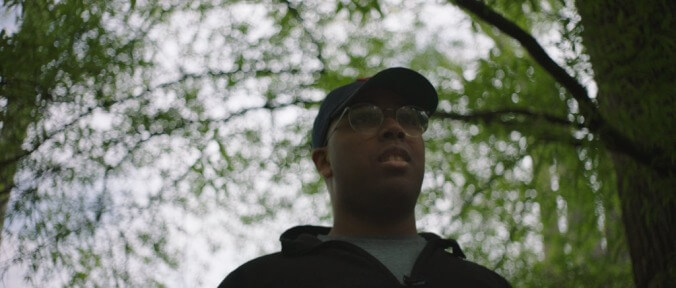Naoki Higashida, a non-speaking autistic person from Japan, was only 13 when he wrote The Reason I Jump, his revelatory first-person account of life on the spectrum. Published in Japan in 2007 and translated into English six years later by a team that included Cloud Atlas writer David Mitchell, Higashida’s groundbreaking memoir not only upended expectations of what an autistic person was capable of; it also communicated a seemingly impenetrable experience with remarkable lucidity. Using Higashida’s book as a spiritual guide, Jerry Rothwell’s documentary of the same name, which won an audience award at Sundance 2020, similarly bridges the divide between the neurodivergent minority and the neurotypical majority with empathy and originality. It’s a blatantly didactic film, yet its focus on advocacy feels justified given the misconceptions that continue to dominate society’s understanding of the autism community.
Higashida declined to appear in the film, citing his desire for the writing to stand for itself. This limitation actually pushes Rothwell’s adaptation into more unconventional territory: Throughout the film, we see a fictional Higashida (Jim Fujiwara) silently exploring a dreamy natural landscape to emphasize autism’s intensely sensation-driven reality. But rather than center Higashida’s experiences, Rothwell applies the writer’s insights to the lives of five young, non-speaking autistic people in various parts of the world. Straightforward interviews with each subject’s parents—as well as co-screenwriter Mitchell, whose child is on the spectrum—supplement Higashida’s narrative. But thanks to sound designer Nick Ryan and cinematographer Ruben Woodin Dechamps, the film’s palpable, impressionistic rendering of autism’s heightened sensory dimension gives the film a spellbindingly experimental touch. The result is a kind of abstract group portrait that uses each individual’s unique story to articulate a broader and immersive understanding of neurodiversity.
We first meet Amrit, who lives with her mother in the bustling city of Noida, India. Frustrated by her inability to communicate, Amrit turns to drawing and painting as a form of expression. Contrary to expectation, Amrit’s work—colorful, Modernistic interpretations of her daily routines and observations—is not hindered by her condition. Rather, her artwork is beautiful and distinctive precisely because of her radically different perception of the world. Next is Joss, the son of Jump’s producers, Stevie Lee and Jeremy Dear. Excerpts from Higashida’s book are narrated in voice-over by Jordan O’Donegan and strategically woven throughout each individual’s story as an eloquent explainer. “Time is a continuous thing with no clear boundaries,” the narrator explains, illuminating Joss’s experience of reality—ceaselessly reliving early childhood traumas and memories with destabilizing clarity.
In Arlington, Virginia, best friends Ben and Emma attend a progressive special education school and communicate witty, often insightful ideas to their teachers and loved ones by punching letters one-by-one on an alphabet board. (The film emphasizes the fact that many will deny the severity of a person’s autism when they demonstrate an aptitude or intellectual coherence, yet such assumptions are fundamentally misguided.) Lastly, the film takes us to Sierra Leone, where Jestina, the youngest of the five subjects, faces discrimination and demonization from a deeply traditional community that clings to dated notions of autism.
In each section, Rothwell also spotlights the experiences of parents, many whose understanding of their children changed after reading Higashida’s memoir. Jestina’s parents, Mary and Roland, explain their struggle to establish the country’s first special needs school, and the obstacles they face in a society that dismisses their dedication as silly and futile. This split focus on children and parents doesn’t detract from the main subjects; rather it mirrors the film’s overarching objective: debunking the neurotypical worldview and creating a safer, more empathetic future for people on the spectrum. Education and open-mindedness is crucial to this mission; as Higashida puts it, “We, too, want to grow.” Through this film, Rothwell makes the case that such growth for autistic people is only possible if the rest of the world allows it.


 Keep scrolling for more great stories from A.V. Club.
Keep scrolling for more great stories from A.V. Club.